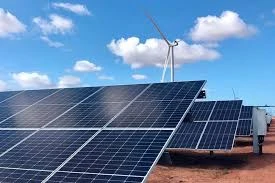multi string solar inverter
Understanding Multi-String Solar Inverters A Comprehensive Overview
As the world increasingly turns to renewable energy sources, solar power has emerged as a leading solution for sustainable energy generation. Among the various technologies available, multi-string solar inverters have gained significant attention for their ability to optimize energy production and improve system performance. This article delves into the workings, advantages, and considerations regarding multi-string solar inverters.
What is a Multi-String Solar Inverter?
A multi-string solar inverter is a type of inverter designed to convert the direct current (DC) generated by solar panels into alternating current (AC) for use in homes and businesses. Unlike traditional inverters that typically handle a single string of solar panels, multi-string inverters can manage multiple strings, or arrays, of panels simultaneously. This adds flexibility in the system design and performance monitoring.
How Does It Work?
The fundamental operation of a multi-string inverter involves parallel processing of inputs from several strings of solar panels. Each string can consist of multiple solar modules connected in series. Because each string can face different conditions—such as shading, orientation, and temperature—a multi-string inverter can optimize the performance of each one independently. This is achieved through maximum power point tracking (MPPT) technology, which ensures that each string operates at its peak output regardless of the others.
Advantages of Multi-String Solar Inverters
1. Increased Energy Harvesting By optimizing the performance of each solar string independently, multi-string inverters can significantly increase the overall energy output of a solar system, especially in situations where panel performance may vary due to shading or debris.
2. Design Flexibility Multi-string inverters allow for greater flexibility in system design. They can accommodate panels of varying orientations and tilts without compromising performance, which is particularly beneficial for residential installations with limited roof space.
3. Improved Monitoring and Diagnostics These inverters typically come equipped with advanced monitoring capabilities, allowing users to keep track of the performance of each string. This can help in identifying faults or underperformance issues more readily than traditional inverters, facilitating timely maintenance.
4. Greater System Stability In the event that one string underperforms (due to shading, for instance), the overall impact on system output is minimized, as other strings continue to operate efficiently. This stability is particularly advantageous in commercial systems where consistent energy generation is often crucial.
multi string solar inverter

5. Scalability Multi-string inverters provide scalability options for solar systems. As energy demands grow or financial resources increase, additional solar strings can be added without having to replace the existing inverter setup.
Considerations When Choosing a Multi-String Inverter
While multi-string solar inverters offer many benefits, there are several important factors to consider when selecting one for your solar system
1. Cost Multi-string inverters generally have a higher upfront cost compared to their single-string counterparts. However, the increased efficiency and energy output can often justify the investment over time.
2. Compatibility Ensure that the inverter is compatible with the type of solar panels you plan to use. Different panels have varying electrical characteristics, and optimal performance relies on compatibility.
3. Capacity and Specifications Evaluate the inverter's specifications to ensure it meets the energy needs of your household or business. Pay attention to the number of strings it can accommodate and its maximum DC input.
4. Brand and Warranty Choose reputable brands that offer good customer support and warranty periods, as inverters are crucial to system performance.
5. Installation Complexity Consider the installation requirements, as multi-string inverters may involve more complex wiring compared to simpler systems.
Conclusion
Multi-string solar inverters represent a key advancement in solar technology, providing a solution that effectively addresses the challenges of variable solar panel performance. With their ability to optimize energy harvesting, add flexibility to system design, and improve monitoring capabilities, they are an excellent choice for both residential and commercial solar installations. While the initial investment may be higher, the long-term benefits of increased energy efficiency and system performance often outweigh the costs, making multi-string inverters a smart investment for those looking to harness the sun’s power effectively. As the solar energy market continues to evolve, understanding such technologies will play a critical role in achieving energy sustainability.
-
String Solar Inverter: The High-Efficiency Solution for Smart Solar EnergyNewsJul.14,2025
-
Revolutionizing Rooftop Energy with the Power of the Micro Solar InverterNewsJul.14,2025
-
Power Independence with Smart Off Grid Solar Inverter SolutionsNewsJul.14,2025
-
On Grid Solar Inverter: Powering the Future with Smart Grid IntegrationNewsJul.14,2025
-
Monocrystalline Solar Panels: High-Efficiency Power for the Future of Clean EnergyNewsJul.14,2025
-
Bifacial Solar Panel: A Smarter Investment for Next-Generation Energy SystemsNewsJul.14,2025







